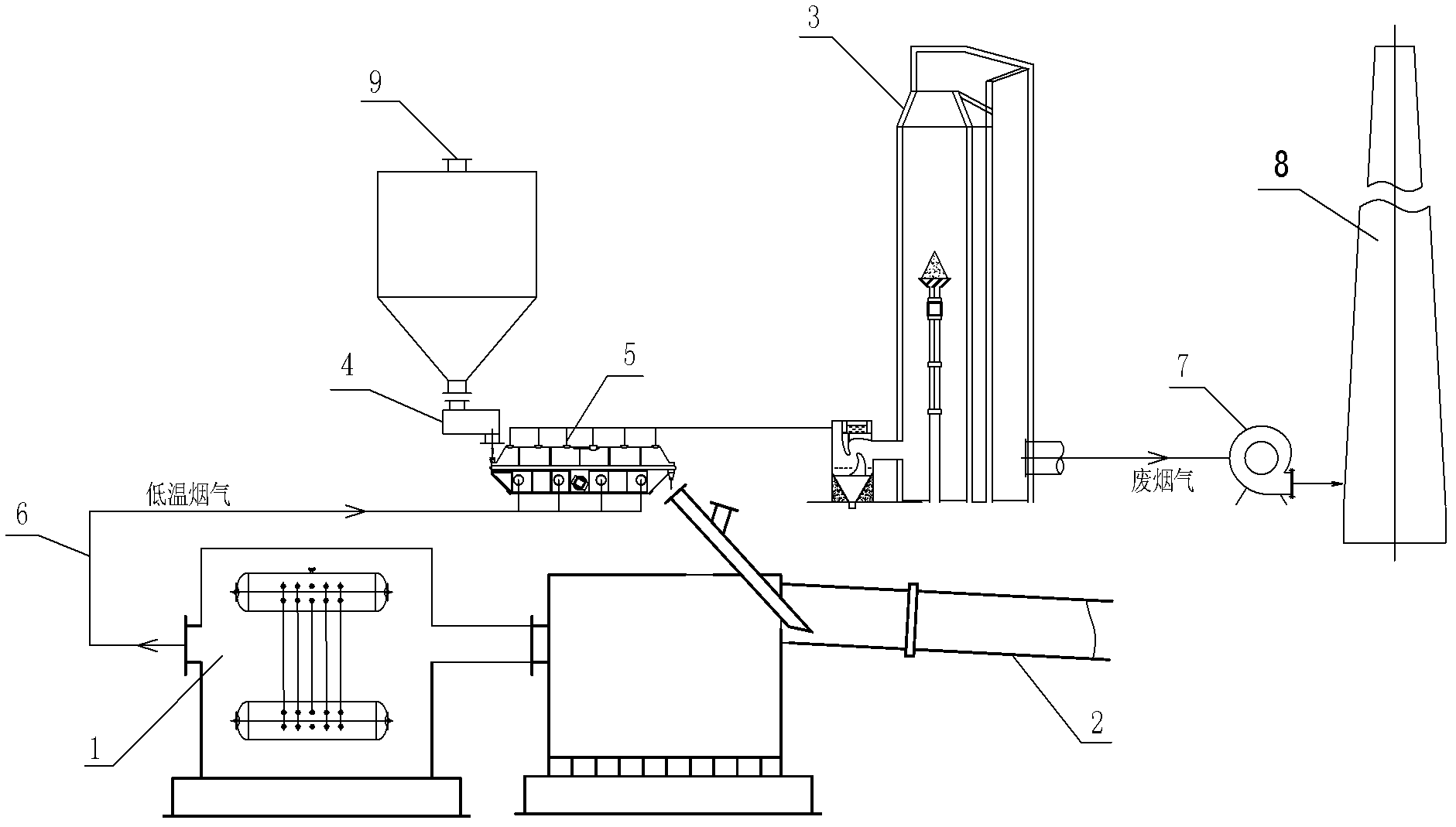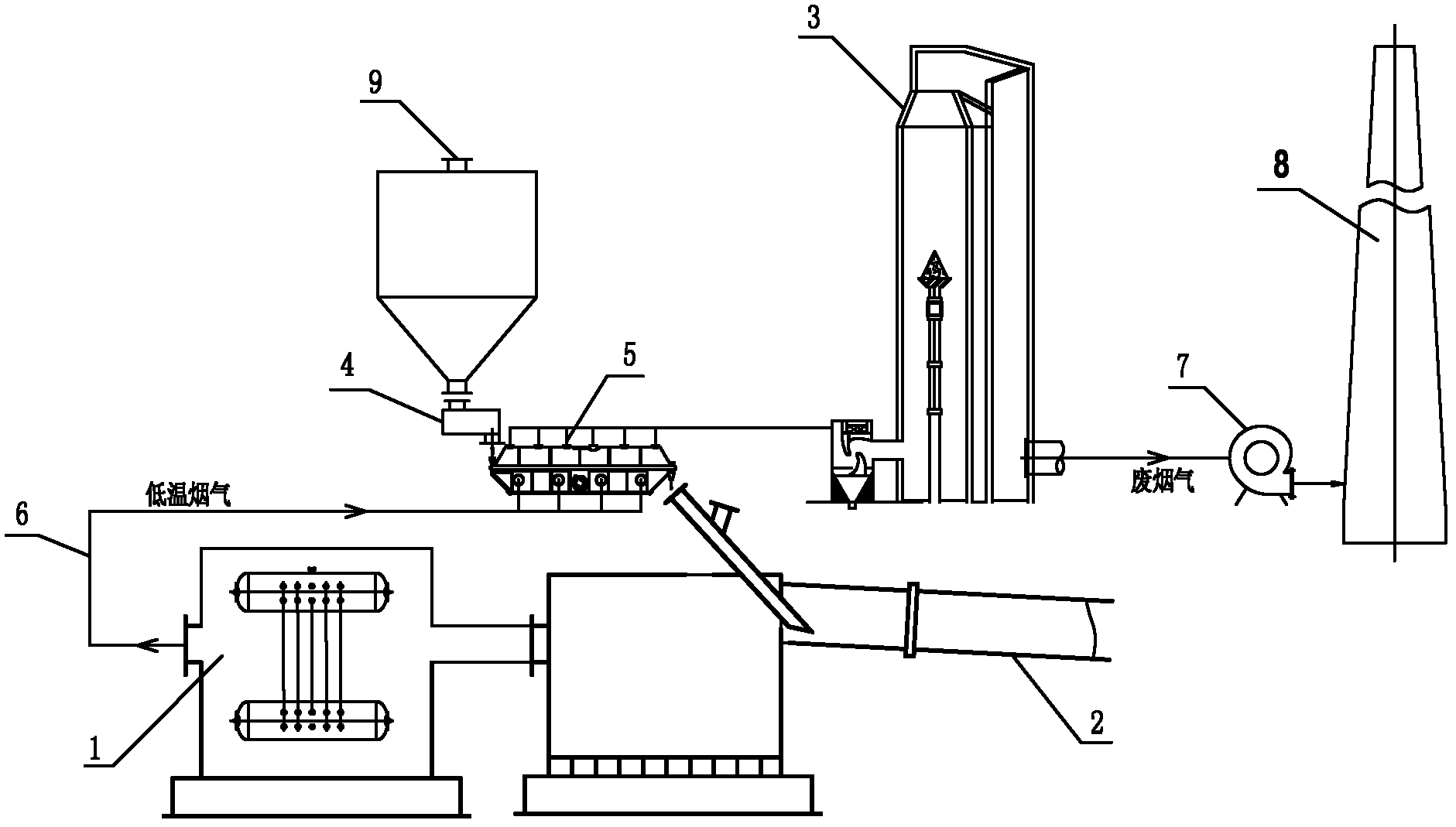Method and device for dehydrating green coke by utilizing low-temperature flue gas of calcination system
A low-temperature flue gas and calcination technology, which is applied in the directions of dry gas arrangement, carbon preparation/purification, process efficiency improvement, etc., can solve the problem that the dehydration tank and the large-inclination belt conveyor occupy a large area and the waste heat of low-temperature flue gas is not utilized , large civil engineering foundation and other issues, to achieve the effect of reducing the risk of blasting into the kiln, saving construction funds, and reducing water content
- Summary
- Abstract
- Description
- Claims
- Application Information
AI Technical Summary
Problems solved by technology
Method used
Image
Examples
Embodiment Construction
[0015] The specific embodiment of the present invention will be further described below in conjunction with accompanying drawing:
[0016] See figure 1 , is a structural schematic diagram of an embodiment of a device for dehydrating green coke by using low-temperature flue gas from a calcination system in the present invention. The original calcination system includes a waste heat boiler 1, a rotary kiln 2, an integrated device for dust removal and desulfurization 3, and a quantitative feeder 4. In order to reduce the water content of raw coke entering the kiln, a dryer 5 is installed between the quantitative feeder 4 and the rotary kiln 2. The green coke in the pre-calcination bin 9 enters the dryer 5 through the quantitative feeder 4 for dehydration and then enters the rotary kiln 2 for calcination. , the economizer outlet of the waste heat boiler 1 is connected to the air inlet of the dryer 5 through a pipeline 6, and the flue gas outlet of the dryer 5 is connected to the a...
PUM
 Login to View More
Login to View More Abstract
Description
Claims
Application Information
 Login to View More
Login to View More - R&D
- Intellectual Property
- Life Sciences
- Materials
- Tech Scout
- Unparalleled Data Quality
- Higher Quality Content
- 60% Fewer Hallucinations
Browse by: Latest US Patents, China's latest patents, Technical Efficacy Thesaurus, Application Domain, Technology Topic, Popular Technical Reports.
© 2025 PatSnap. All rights reserved.Legal|Privacy policy|Modern Slavery Act Transparency Statement|Sitemap|About US| Contact US: help@patsnap.com


